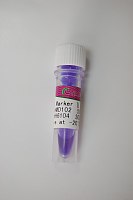Processivity of DNA Repair Enzymes
互联网
468
DNA repair enzymes monitor a host’s genome for structural aberrations caused by exogenous damage (ionizing or UV radiation, chemical exposure) or spontaneous damage (deamination, oxidation, or base loss). Lack of repair at such sites can result in replication and transcription blockage, and potentially error-prone replication bypass that could eventually lead to cell transformation. Several human diseases, such as xero-derma pigmentosum, Cockayne’s syndrome, trichothiodystrophy, and human hereditary nonpolyposis colon cancer, are associated with inefficient DNA repair mechanisms (reviewed in ref. 1 ). As these lesions occur infrequently in DNA, enzymes must discriminate between normal, intact DNA and damaged DNA in circumstances where the former predominates.







